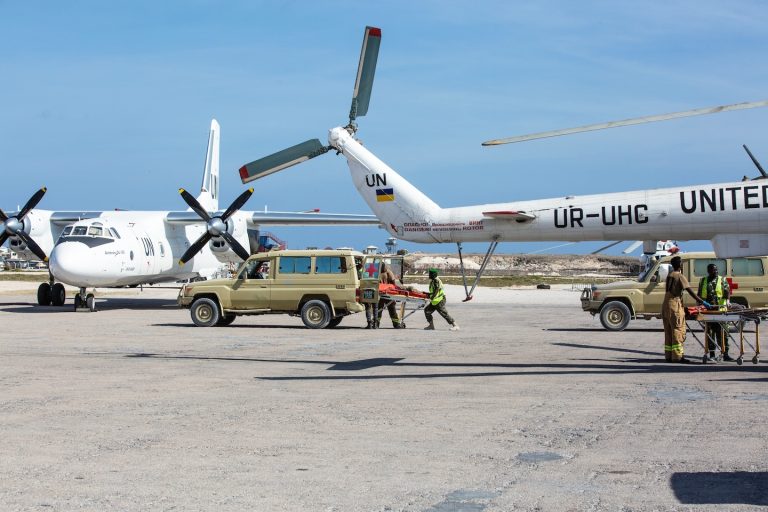All of them are missing, and one of them is presumed dead after the helicopter crashed in an area considered a stronghold of the Islamist Al-Shabaab rebel movement. The militant group is fighting the Somali government and its allies, including the African Union peacekeeping force, to impose a strict version of Islamic law, with punishments such as stoning, amputation and public flogging.
The survivors are believed to be held by the armed group. Neither the United Nations nor the African Union Transitional Mission in Somalia, a peacekeeping force known as ATMIS, have released details of the incident except to confirm that a helicopter went down.
According to the timeline provided by the two Mogadishu-based security officials and messages shared with The Washington Post, about an hour passed before the African Union peacekeeping force – which had another helicopter nearby – was notified that the UN helicopter had gone down. The reason for the delay was not clear.
A timeline reconstructed by The Post showed that the helicopter was an hour into the flight after refueling when the crew noticed unusual vibrations. An internal UN message later said that something had struck the rotor; A message shared with The Post indicated that the tip of the blade had broken off.
At approximately 1 p.m. local time, the crew decided to make an emergency landing, according to a message shared with The Post. Three other officials confirmed the approximate timeline. An official said the pilot did an excellent job controlling the spin and preventing a fatal accident. All officials spoke on condition of anonymity because they were not authorized to speak to the media.
At 1:10 pm, the crew reported the incident to Mogadishu.
By 1:20 p.m., messages were flying back and forth about the possibility of a rescue flight bringing a new blade from the capital, Mogadishu. But even at top speed, a Mi-8 helicopter would have taken 100 minutes to make the 250-mile flight, assuming there were no refueling stops. This would allow the disabled helicopter to exit hostile territory, but the rescue helicopter would not have enough fuel to return to Mogadishu. Even reaching the nearest Belitoin fuel depot would have pushed him to the edge of his range.
The two officials said that the passengers called Mogadishu again at 2 pm, and following this call, the African Union peacekeeping force was informed of the incident and a request was made to pick up the crew. There was an AU helicopter about 80 miles or 30 minutes away in the town of Wessel loaded with enough fuel to reach the crash site. The plan was to fly with 20 Somali soldiers who could stand guard while repairs were made.
At 2:16 p.m., as the relief flight was preparing to take off, one of the people aboard the downed helicopter told Mogadishu that four unidentified people had approached the site but retreated when an aircraft security officer pointed his weapon.
In addition to the dangers posed by Al-Shabaab in the lawless region, clan militias and criminal gangs also operate there. They have previously kidnapped foreigners and sold them to the highest bidder.
One official expressed frustration that the AU flight had not left Wessel earlier, but another official said the flight had been prepared as quickly as possible, and that unidentified information about the downed helicopter also increased the risk of losing a second helicopter.
At 2:34 p.m., a person at the landing site reported to Mogadishu that armed men had captured five survivors from the landing site and that one person had been killed, according to notes shared with The Washington Post. The Ugandan security officer and the Somali doctor managed to evade arrest.
At 2:36 p.m., no one at the landing site was answering their phones anymore. Two officials said that by 3 p.m. the helicopter was burning.
Since then, communications have been cut off from the people holding the survivors, an official familiar with the incident said. Al-Shabaab also did not claim responsibility for the attack.

